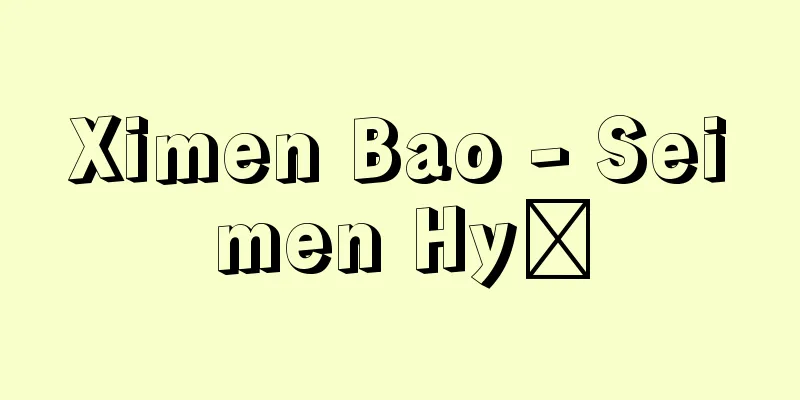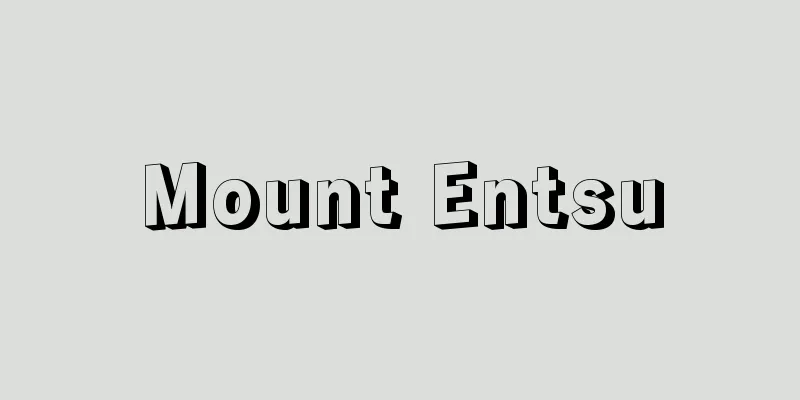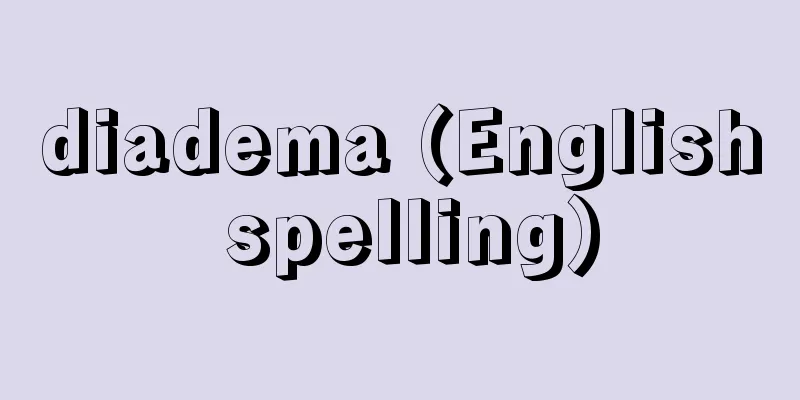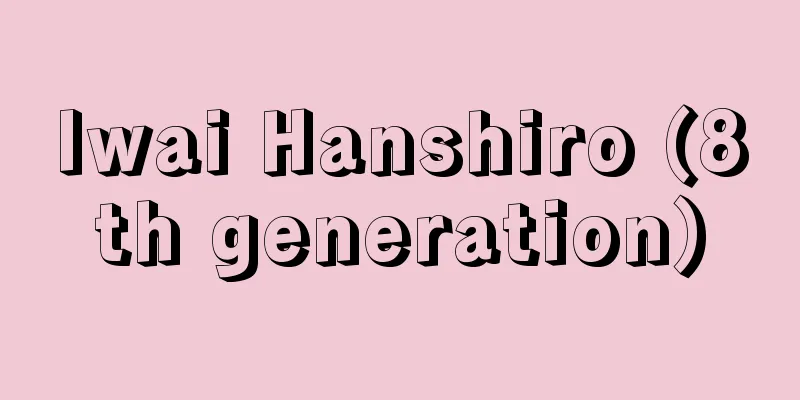Aoudou Denzen - Aoudou Denzen
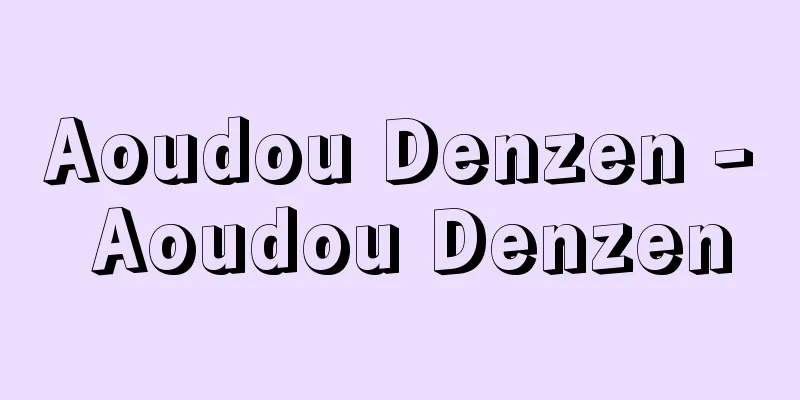
|
A Western-style painter from the late Edo period. His real name was Nagata Zenkichi, and he was known as Denzen. Aodo was a temple name that was a reference to Asia and Europe, and he was also known as Seizando. He was born in Sukagawa, Mutsu Province (now Fukushima Prefecture). He studied painting under the monk Gessen while working in the dyeing business, but his talent for painting was discovered by Matsudaira Sadanobu, the lord of Shirakawa Castle, and he became a pupil of the younger Tani Buncho. He was then ordered by Sadanobu to study copperplate printing, and it seems he first became a pupil of Shiba Kokan, but was excommunicated. Later, with the help of Dutch scholars around Sadanobu, he mastered the techniques of copperplate printing (etching) and oil painting. He honed his skills by copying Western copperplate prints, and produced reproductions of Western copperplate prints such as "Zelmania: The Red Light District" (1809), but he also produced many large and small landscapes of famous Edo places, mainly during the Bunka era (1804-1818), and became an important copperplate print artist. His copperplate prints were more technically advanced than those of Kokan, and tended to be genre paintings with a focus on people. Among Tazen's original Western-style paintings, "Ryogoku-zu" (Nara family collection) and "Imado Kawara-yaki-zu" (Kobe City Museum) tend to be genre paintings, but "Mt. Asama-zu" (Tokyo National Museum) is a landscape painting, an ambitious work that combines the realism of Western-style painting with the decorativeness of a folding screen format. He also produced practical copperplate prints, such as illustrations for Ueda Genshin's "Ihan Teikou" (1808) and "Shintei Bankoku Zenzu" (1810). [Fujio Naruse] "Study of Japanese Copperplate Printing in the Early Modern Period" by Yo Kanno (1974, Bijutsu Shuppansha)" ▽ "Western-style Paintings of the Edo Period" by Fujio Naruse (1977, Shogakukan)" ▽ "Study of Aoudou Denzen" by Yasuhiko Isozaki (1980, Yushodo Shoten) Source: Shogakukan Encyclopedia Nipponica About Encyclopedia Nipponica Information | Legend |
|
江戸後期の洋風画家。本名永田善吉を略し田善と号した。亜欧堂はアジアとヨーロッパにちなむ堂号で、ほかに星山堂とも称した。陸奥(むつ)国(福島県)須賀川(すかがわ)に生まれる。染物業のかたわら僧月僊(げっせん)に絵を学ぶが、領主の白河城主松平定信(さだのぶ)に画才をみいだされ、自分より若い谷文晁(ぶんちょう)の弟子となった。ついで、定信から銅版術の研究を命ぜられ、初め司馬江漢の弟子になったようであるが破門、のち定信周辺の蘭学者(らんがくしゃ)の協力を得て銅版画(エッチング)や油絵の技術を習得。彼は西洋銅版画を写して画技を磨き、『ゼルマニア廓中之図』(1809)のような西洋銅版画の模刻作品もつくったが、文化(ぶんか)年間(1804~1818)を中心として大小多数の江戸名所風景図を世に出し、銅版画家として重きをなした。彼の銅版画は江漢よりも技術が進んでおり、人物を中心とした風俗画的傾向が強い。田善の肉筆洋風画でも『両国図』(奈良家蔵)、『今戸瓦(かわら)焼図』(神戸市立博物館)は風俗画の傾向が強いが、『浅間山図』(東京国立博物館)は風景画で、洋風画の写実と屏風(びょうぶ)形式の装飾性を合体させた野心作である。宇田川玄真著『医範提綱(いはんていこう)』(1808)の挿絵や『新訂万国全図』(1810)など実用銅版画もつくった。 [成瀬不二雄] 『菅野陽著『日本銅版画の研究 近世』(1974・美術出版社)』▽『成瀬不二雄著『江戸の洋風画』(1977・小学館)』▽『磯崎康彦著『亜欧堂田善の研究』(1980・雄松堂書店)』 出典 小学館 日本大百科全書(ニッポニカ)日本大百科全書(ニッポニカ)について 情報 | 凡例 |
<<: White Horse Festival - Aouma no Sechie
>>: Duckweed (English spelling)
Recommend
medley
...In the women's 100m, M. Meagher (USA) reco...
Echigo Lion (Street Performance) - Echigo Lion
…The name of the Echigo Lion in Edo. It is also c...
perf
… Perforations are small holes made on all four s...
Right to ask questions - right to ask questions
The right of a party to a trial to ask the presidi...
Touhoukai - Touhoukai
A right-wing national socialist party presided ov...
Examination of the parties involved
In civil litigation, examination of evidence is c...
Praga, Marco
Born: 1862, Milan [Died] 1929. Italian playwright ...
Osteomyelitis (Suppurative osteomyelitis)
What is the disease? This is a disease in which b...
News - News (in English)
Daily events that occur in society, and the news ...
Aigo no Waka
The title of a sekkyo joruri piece. The year of i...
Nippers
A character from Nippon Victor (now JVC Kenwood). ...
Meishintanyu - Kukatachi
An ancient method of evidence. Mud was boiled in ...
Silver jellyfish - Silver jellyfish
A marine animal belonging to the phylum Coelenter...
Battani - Battani
One of the greatest Islamic astronomers. His Lati...
eutrophic lake
…Originally a term in limnology, it refers to the...
